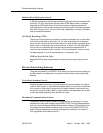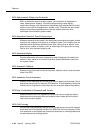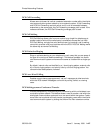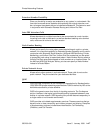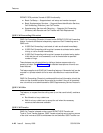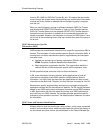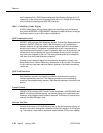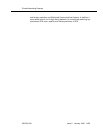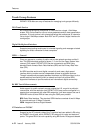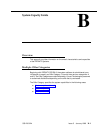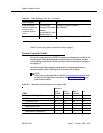
Features
555-230-024
A-50 Issue 5 January 1998
tem-Parameters form. QSIG Name and Number Identification displays up to 15
characters for the calling and connected name and up to 15 digits for the calling
and connected number across ISDN-PRI interfaces.
QSIG - Called/Busy Name Display
A QSIG Called Name or Busy Name displays on the calling party’s display as
soon as the ALERTING or DISCONNECT message has been received, as long as
the System Version is set to R6 or later configurations.
QSIG Path Replacement
DEFINITY ECS provides QSIG Additional Network Feature Path Replacement as
defined in ISO/IEC 13863 and 13874. With this feature, a call’s connections
between switches in a private network can be replaced with new connections
while the call is active. This feature is invoked when a call is transferred and
improvements may be made in costs. For example, after a call is transferred, the
two parties on the transferred call can be connected directly and the unneces-
sary trunks are dropped off the call. The routing administered at the endpoints
may allow for a more cost-effective connection.
The best route is selected based on the preference assigned to routes in the
Route Pattern form. Class of Restriction is adhered to in routing calls. This feature
is not invoked on data calls because there is a period of time when information
can be lost.
QSIG Path Retention
Path Retention maintains the signaling connection and permits the caller to
invoke supplementary services. The network connection can be retained for
more than one supplementary service if Path Retention has been invoked for that
service.
Transit Counter
DEFINITY ECS provides QSIG Transit Counter as defined in ISO/IEC 6B032 and
6B033. It prevents indefinite looping, connections giving poor transmission per-
formance, and inefficient use of network resources. This feature is invoked auto-
matically for ISDN-PRI basic calls.
Uniform Dial Plan
Provides a common 4- or 5-digit dial plan that can be shared among a group of
switches. Interswitch dialing and intraswitch dialing both require 4- or 5-digit dial-
ing. This feature is used with an electronic tandem network (ETN); main, satellite,




